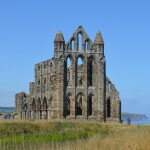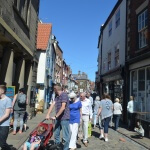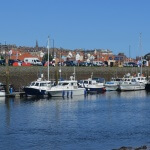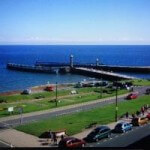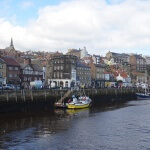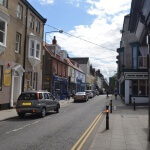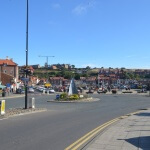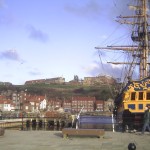
Whitby Grand Turk and Harbour
Whitby Abbey
Whitby’s Abbey was founded in 657 AD by the Saxon King of Northumbria, Oswy (Oswiu) as Streanshalh (Streonshalh). The name Streoneshalh is thought to signify Fort Bay or Tower Bay in reference to a supposed Roman settlement or Roman Signal Station that previously existed on the site before the Whitby Abbey was built.
He appointed Lady Hilda, niece of Edwin, the first christian king of Northumbria, as Abbess of Whitby Abbey. The double monastery of Benedictine monks and nuns was also home to the great Saxon poet Caedmon.
In 664, the abbey, built on the east cliff overlooking the Esk and town of Whitby, was the site of the Synod of Whitby, at which the Northumbrian Celtic church was reconciled to Rome.
In 867, Whitby Abbey fell to Viking attack, and was abandoned until 1078, when it was re-founded by Regenfrith (Reinferd) a soldier monk, under the orders of his protector, the Norman, William de Percy.
The second monastery lasted until it was destroyed by Henry VIII in 1540.
The abbey buildings fell into ruins, and were mined for stone, but remained a prominent landmark for sailors.
Whitby Abbey was rendered famous in fiction by Bram Stoker’s 1897 novel Dracula, as Dracula there came ashore as a creature resembling a large dog and proceeded to climb the 199 steps which lead up to the ruins.
In December 1914, Whitby Abbey was shelled by German battlecruisers Von der Tann and Derfflinger who were aiming for the signal post on the end of the headland. Scarborough and Hartlepool were also attacked. The Abbey sustained considerable damage during the ten minute attack.

